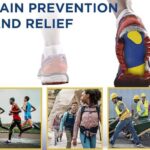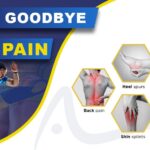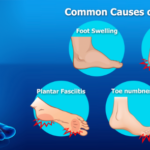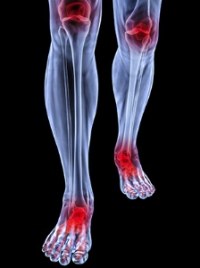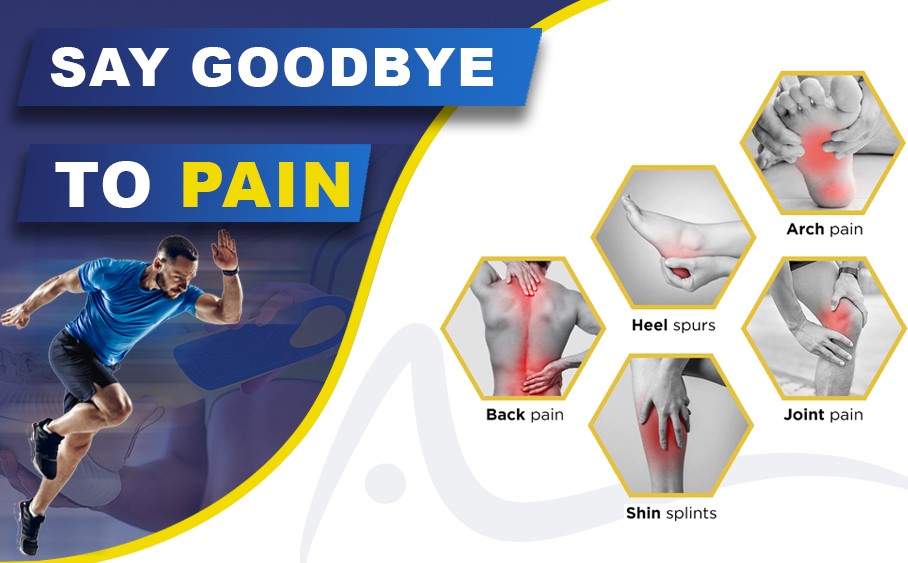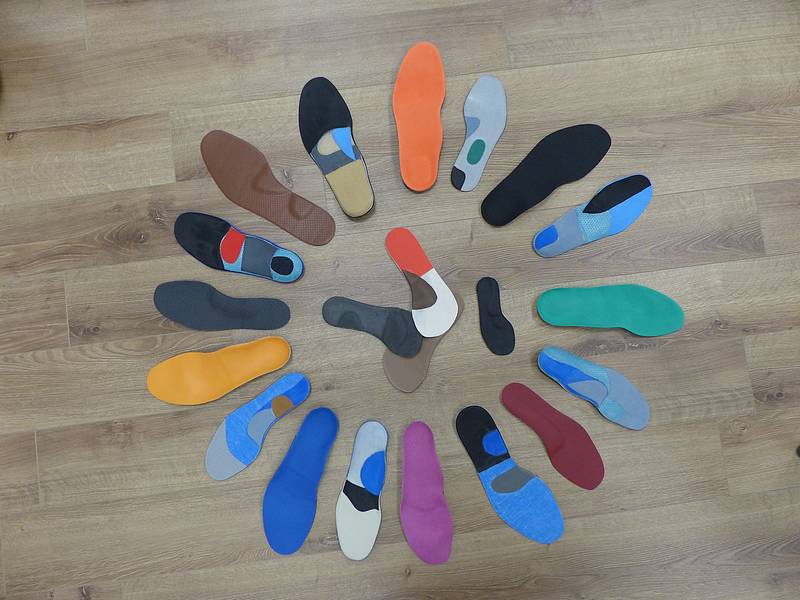Arthritic foot pain can significantly impact daily life, hindering mobility and causing discomfort. Understanding the underlying causes and effective solutions is crucial for managing and alleviating this pain.
Introduction: Understanding Arthritic Foot Pain
Arthritic foot pain, a prevalent ailment impacting numerous individuals globally, stems from diverse factors intricately linked to joint health and inflammatory responses within the body. The development of this condition often results from prolonged stress on the feet, causing degeneration of joint cartilage or stemming from inflammatory conditions such as rheumatoid arthritis.
This discomfort manifests in various degrees, ranging from mild irritation to persistent, debilitating pain, profoundly affecting an individual’s mobility and quality of life. The complexity of arthritic foot pain lies in its multifaceted nature, where the mechanisms of joint degeneration and inflammation interplay, leading to distress and reduced functionality in affected individuals.
Unraveling the intricacies of this condition is crucial not only for those experiencing the pain but also for caregivers and medical professionals. A comprehensive understanding of the underlying causes, varying degrees of severity, and the diverse array of symptoms associated with arthritic foot pain is fundamental to devising effective management strategies and exploring viable relief options for individuals grappling with this challenging ailment
Causes of Arthritic Foot Pain
Arthritic foot pain arises from a culmination of intricate factors, primarily characterized by two fundamental causes that significantly contribute to its onset and progression.
Wear and Tear on Joints: The continual stress and strain exerted on the feet over prolonged periods often result in wear and tear on the joints. This prolonged stress gradually deteriorates the protective cartilage within the joints, particularly those responsible for bearing body weight. Over time, this degeneration leads to a reduction in joint flexibility, accompanied by stiffness and discomfort, especially during movement.
Inflammatory Conditions: Inflammatory forms of arthritis, including rheumatoid arthritis and gout, among others, trigger an immune system response that targets the joints in the feet. This autoimmune response leads to persistent inflammation within the joint structures, causing swelling, tenderness, and pain. The inflammatory process disrupts the normal functioning of the affected joints, resulting in limited mobility and hindering day-to-day activities.
The interplay between these causes often varies in individuals, contributing to a diverse spectrum of symptoms and severity levels. Understanding the intricate mechanisms underlying these causes becomes crucial in devising tailored treatment plans aimed at alleviating discomfort and improving the quality of life for those experiencing arthritic foot pain.
The Role of Arch Support
Arch support serves as a crucial ally in the management of arthritic foot pain, offering multifaceted benefits aimed at alleviating discomfort and enhancing foot functionality in individuals grappling with arthritic conditions.
Pressure Distribution: One of the primary functions of arch support lies in its ability to redistribute the body’s weight across the foot’s surface evenly. By effectively dispersing pressure, particularly on vulnerable areas such as the heel and ball of the foot, arch support minimizes undue stress on arthritic joints. This distribution alleviates discomfort and diminishes the intensity of pain experienced during weight-bearing activities.
Stabilization: Arthritic conditions often lead to weakened or strained arches, exacerbating the discomfort. Arch support provides essential structural reinforcement, aiding in stabilizing the foot’s arches. This stabilization mitigates excessive movement within the foot, reducing strain on affected joints and providing a more secure foundation for walking or standing.
Alignment Correction: In cases where arthritis causes misalignment of the foot, arch support contributes significantly to correcting and maintaining proper foot alignment. By promoting better alignment, it reduces abnormal stresses on joints, optimizing the foot’s biomechanics, and thereby diminishing pain and discomfort associated with arthritic conditions.
Shock Absorption: Furthermore, arch support solutions often incorporate shock-absorbing materials or technologies. This feature assists in attenuating the impact of each step, lessening the strain on arthritic joints and providing an additional layer of cushioning for enhanced comfort.
Recognizing the multifaceted benefits of arch support in addressing arthritic foot pain underscores its significance in enhancing the quality of life for individuals affected by these conditions. Tailoring arch support solutions to individual foot characteristics and specific pain points remains integral in maximizing its effectiveness as a supportive measure for arthritic discomfort.
Types of Arch Support Solutions
A diverse array of arch support solutions exists, catering to the unique needs and preferences of individuals experiencing arthritic foot pain. These solutions encompass different forms and functionalities, providing tailored support to alleviate discomfort and enhance foot function.
Insoles: These are inserts that fit into the shoes and offer additional cushioning and support to the arch area. They come in various materials and designs, providing varying degrees of cushioning and support based on individual requirements.
Orthotics: Orthotic devices are custom-made or pre-fabricated inserts designed to address specific foot issues. These devices are crafted to provide precise support to the arch, correcting foot alignment, and reducing strain on arthritic joints.
Arch Support Sandals and Shoes: Footwear specifically engineered with built-in arch support offers continuous support throughout the day. These sandals or shoes incorporate features such as contoured footbeds and reinforced arches to alleviate discomfort caused by arthritic conditions.
Compression Sleeves and Braces: These wearable devices wrap around the foot and provide compression to support the arch. They offer additional stability, particularly beneficial for individuals experiencing instability due to arthritic foot conditions.
Customized Inserts: These solutions are crafted based on individual foot impressions or digital scans, creating personalized arch support tailored to unique foot shapes and specific pain points.
Understanding the diverse range of arch support solutions empowers individuals with arthritic foot pain to explore and select the most suitable option that aligns with their comfort needs, lifestyle, and severity of the condition. Consulting a healthcare professional or a podiatrist aids in determining the most effective arch support solution for individual requirements.
Choosing the Right Arch Support
Navigating through the myriad of arch support options demands a thoughtful approach, especially for individuals seeking relief from arthritic foot pain. The Atlas Arch Support emerges as a noteworthy solution amidst the diverse array of available supports due to its targeted design and personalized benefits tailored for managing the complexities of arthritic conditions affecting the feet.
Understanding the Atlas Arch Support: The Atlas Arch Support stands out as a specialized orthotic device meticulously crafted to address the nuances of arthritic foot discomfort. It’s engineered to specifically target the arch area, delivering focused support and cushioning where individuals with arthritic conditions often experience heightened discomfort.
Customization for Tailored Relief: A distinguishing feature of the Atlas Arch Support lies in its adaptability. This support system is customizable, accommodating various foot shapes and arch types. Its adaptable nature allows for personalized adjustments, ensuring a snug fit that aligns with individual foot contours. By providing tailored support, the Atlas Arch Support minimizes strain on arthritic joints, offering relief and promoting better foot functionality.
Strategic Weight Distribution: The Atlas Arch Support excels in its ability to evenly distribute body weight across the foot’s surface. By redistributing pressure away from sensitive areas affected by arthritis, this support system reduces localized discomfort, fostering improved mobility and diminished strain during movement.
Promoting Stability and Alignment: Another significant advantage of the Atlas Arch Support is its contribution to enhancing stability. By supporting the natural arch of the foot, it aids in maintaining proper alignment. This reinforcement not only diminishes the risk of overpronation or supination, common issues associated with arthritic feet, but also fosters a more natural and comfortable gait.
Embracing the Atlas Arch Support within the spectrum of arch support solutions offers individuals grappling with arthritic foot pain a tailored, targeted option for relief. However, consulting a healthcare professional or a podiatrist remains crucial to ascertain the most suitable support based on individual foot characteristics, the specific nature of the arthritis, and other pertinent factors impacting foot health.

Tips for Using Arch Support Effectively
- Gradual Adjustment: When introducing arch support, start gradually. Allow your feet time to adapt to the new support, especially if you’re not used to wearing orthotic devices. Begin with shorter durations and gradually increase the wearing time as your feet adjust.
- Proper Fit: Ensure the arch support fits snugly in your shoes without causing any discomfort or constriction. A proper fit prevents slippage and maximizes the support provided to your feet.
- Consistent Use: Consistency is key. Wear your arch supports regularly to reap their full benefits. Incorporating them into your daily routine aids in maintaining proper foot alignment and reducing strain on arthritic joints.
- Comfortable Shoes: Pair your arch supports with comfortable, supportive shoes. Opt for footwear that accommodates the inserts without compromising on comfort or causing excessive pressure on sensitive areas of your feet.
- Regular Assessment: Periodically assess the condition of your arch supports. Check for any signs of wear or reduced effectiveness. If they show signs of wear and tear, consider replacing them to ensure continued support.
- Foot Care Routine: Incorporate foot care routines alongside using arch supports. Practices like gentle stretching, massaging, and appropriate footwear choices outside of arch support usage contribute to overall foot health and comfort.
- Professional Consultation: Seek advice from a podiatrist or healthcare professional. They can provide guidance on the most suitable arch support for your specific foot condition and offer recommendations on usage and care.
By following these tips and integrating arch support effectively into your daily routine, you can optimize their benefits, alleviate arthritic foot pain, and enhance your overall foot health and comfort.
Lifestyle Changes for Arthritic Foot Pain Relief
- Low-Impact Exercise: Engage in low-impact activities such as swimming, cycling, or yoga to maintain joint flexibility and strengthen the muscles supporting the feet without exerting excessive pressure on arthritic joints.
- Foot-Friendly Footwear: Opt for shoes that provide ample support and cushioning, accommodating your arch supports if needed. Avoid high heels or shoes with minimal support, as they can exacerbate foot pain.
- Weight Management: Maintaining a healthy weight reduces the strain on weight-bearing joints in the feet, alleviating pressure and decreasing discomfort associated with arthritic conditions.
- Foot Care Routine: Implement a foot care regimen involving gentle stretching exercises for the feet, regular massaging, and proper trimming of toenails to prevent additional discomfort or complications.
- Rest and Recovery: Allow your feet adequate rest between activities to prevent overexertion and minimize stress on arthritic joints. Balancing activity with sufficient rest is essential for managing pain and promoting healing.
- Orthotic Use Consistency: Ensure consistent usage of prescribed orthotic devices or arch supports as part of your daily routine. This consistency aids in maintaining proper foot alignment and reducing strain on affected joints.
- Temperature Therapies: Alternate between warm and cold therapies, such as soaking your feet in warm water or applying ice packs, to alleviate inflammation and soothe soreness.
- Mindful Movement: Be mindful of your movements. Avoid sudden, jerky motions and take care when navigating uneven surfaces or stairs to prevent accidental stress on arthritic joints.
- Consultation and Monitoring: Regularly consult a healthcare professional or a podiatrist to monitor the progression of arthritic foot pain and receive guidance on managing the condition effectively.
Incorporating these lifestyle changes into your daily routine can significantly contribute to relieving arthritic foot pain, improving mobility, and enhancing overall foot comfort. Always consult with a healthcare professional before making significant lifestyle changes to ensure they align with your specific health needs and conditions.
Seeking Professional Advice
When facing arthritic foot pain, consulting a healthcare professional or a specialized podiatrist is pivotal for comprehensive guidance and tailored treatment plans. These professionals possess expertise in diagnosing and managing arthritic conditions affecting the feet.
Accurate Diagnosis: Healthcare professionals can accurately diagnose the specific type and severity of arthritis affecting your feet through thorough examinations and diagnostic tests. This precise diagnosis forms the basis for appropriate treatment strategies.
Tailored Treatment Plans: Based on the diagnosis, healthcare professionals can formulate personalized treatment plans. These plans may include a combination of medication, physical therapy, orthotic prescriptions, and lifestyle adjustments tailored to address your unique foot condition and alleviate pain.
Orthotic Recommendations: Podiatrists specialize in assessing foot biomechanics and prescribing custom or specialized orthotic devices, such as arch supports or insoles, specifically suited to alleviate arthritic foot pain and improve overall foot function.
Regular Monitoring: Professionals provide ongoing monitoring and guidance. Regular check-ups enable them to track the progression of the condition, assess the effectiveness of treatments, and make necessary adjustments to optimize foot health.
Education and Support: Healthcare professionals offer invaluable education about the condition, lifestyle modifications, and self-care techniques to manage arthritic foot pain effectively. Their support and guidance empower individuals to take an active role in their foot health.
Seeking professional advice ensures accurate diagnosis, personalized treatment, and ongoing support tailored to your specific foot condition. It’s essential to collaborate with healthcare experts to effectively manage arthritic foot pain and enhance your overall foot health and comfort.
Testimonials and Success Stories
Genuine testimonials and success stories from individuals navigating arthritic foot pain offer valuable firsthand experiences, shedding light on effective strategies and solutions.
Emily’s Journey to Relief: Emily’s struggle with arthritic foot pain led her to explore various treatments. However, it was the integration of customized arch supports, recommended by her podiatrist, that transformed her experience. Emily shares in-depth details about the process of finding the right support, how they significantly reduced discomfort, and enabled her to partake in activities she once thought were unattainable due to the pain.
John’s Empowering Experience: John’s determination to manage his arthritic foot pain led him to a podiatrist who devised a tailored exercise regimen. He candidly recounts the journey of discovering specific exercises that strengthened his foot muscles and increased flexibility. John’s story illustrates the tangible progress made possible through targeted exercises and showcases the positive impact on his overall foot health.
Emma’s Testimonial on Footwear Solutions: Emma’s quest for comfort led her to footwear explicitly designed with built-in arch support. She articulates how these specialized shoes alleviated her pain and empowered her to engage comfortably in activities like walking and hiking, previously hindered by foot discomfort. Emma’s testimonial highlights the transformative effect of supportive footwear on daily activities and quality of life.
By delving into these testimonials and success stories, individuals seeking relief from arthritic foot pain gain deeper insights into diverse approaches that have yielded tangible benefits. These narratives provide not only inspiration but also practical guidance in exploring suitable solutions tailored to their unique needs and preferences.
Future Trends in Arch Support Solutions
- Advanced Materials: Continued innovation in materials science may introduce more advanced and adaptive materials for arch supports. These could include lightweight yet durable compounds designed to offer enhanced support and comfort.
- Customized 3D Printing: The advancement of 3D printing technology may lead to the widespread availability of custom-fit arch supports. Personalized supports, tailored to an individual’s unique foot shape and pressure points, could become more accessible.
- Smart Technology Integration: Integration of smart technology within arch supports may enable real-time monitoring of foot movement and pressure distribution. These smart supports could provide data insights for wearers and healthcare professionals, aiding in personalized foot care.
- Biomechanical Analysis: Future arch supports may incorporate sophisticated biomechanical analysis tools. These tools could assess gait patterns and foot movement, allowing for more precise and individualized support recommendations.
- Sustainability Focus: A shift towards eco-friendly and sustainable materials in arch supports is anticipated. Manufacturers may prioritize environmentally friendly materials and production processes to reduce the environmental impact of these products.
- Fashion and Design Integration: Arch supports could see a blend of functionality and aesthetics, with more stylish designs and versatile options that seamlessly integrate into various footwear styles.
- Wearable Tech Integration: Integration of arch supports with wearable tech, such as fitness trackers or health monitoring devices, may offer wearers insights into their foot health and overall wellness.
These potential future trends indicate an exciting trajectory for arch support solutions, promising more personalized, technologically advanced, and sustainable options that cater to individual needs and preferences while enhancing foot comfort and health.
Conclusion
Easing arthritic foot pain through arch support solutions is a proactive approach to managing discomfort and improving mobility. Finding the right support, along with lifestyle adjustments, can significantly enhance one’s quality of life.
FAQs
- What causes arthritic foot pain? Arthritic foot pain can result from inflammatory conditions, wear and tear on joints, genetics, and lifestyle factors.
- How do arch support solutions work? Arch support solutions provide proper alignment, reducing pressure on affected joints, thereby alleviating pain and enhancing mobility.
- Are arch support shoes suitable for all foot types? Arch support shoes come in various designs, but customized solutions might be more suitable for specific foot arch types.
- Can arch support prevent arthritis? Arch support can aid in managing arthritic foot pain but may not prevent the development of arthritis.
- When should I seek professional help for foot pain? Persistent or severe foot pain warrants consultation with a podiatrist for personalized guidance and potential custom orthotics.

